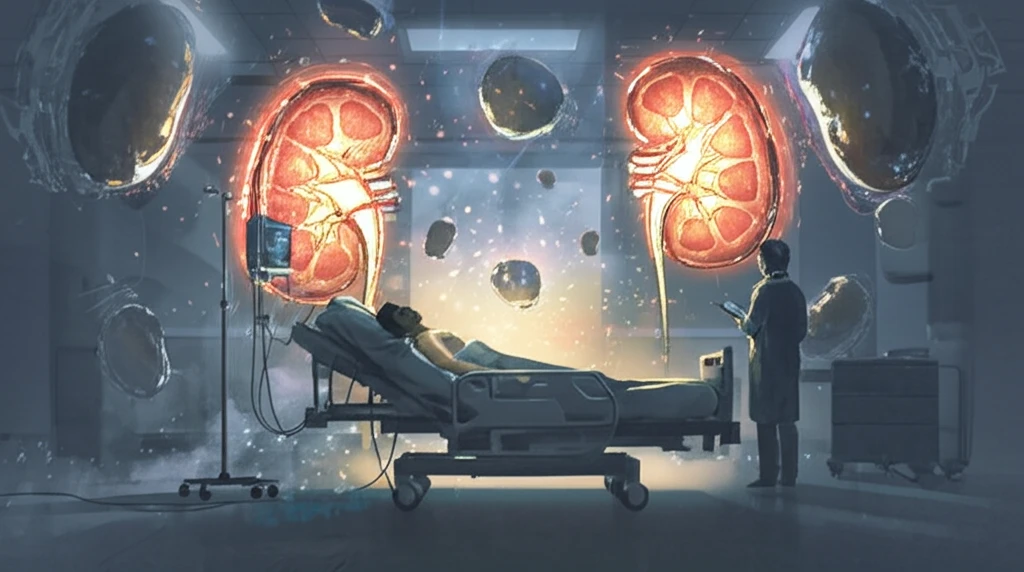
Stone-Free Living: How Active Removal Can Improve Quality of Life for Patients with Poor Performance Status
"Navigating urolithiasis when health is already compromised? Discover how proactive stone management can make a difference."
As the global population ages, the prevalence of urolithiasis, or urinary stone disease, is on the rise, especially among individuals with compromised health. The intersection of urolithiasis and poor performance status (PS) presents a unique challenge, with treatment decisions complicated by concerns about life expectancy and perioperative risks. For those already struggling with health issues, the added burden of kidney stones can severely diminish their quality of life.
Traditionally, there has been a debate about whether active stone removal is appropriate for patients with poor PS. Active intervention comes with its own set of risks, including complications related to comorbidities, decreased immune function, and the limitations of surgical positioning. This has led to some practitioners favoring conservative management, focusing on symptom relief rather than active removal.
However, emerging research suggests that active stone removal can offer significant benefits, not only in alleviating immediate symptoms but also in improving overall and stone-specific survival rates. This article explores the latest findings on active stone removal in patients with poor PS, offering insights into how proactive management can lead to better outcomes and enhanced quality of life.
Why Active Stone Removal Matters: More Than Just Symptom Relief

A recent study published in BMC Urology investigated the outcomes of active stone removal versus conservative management in patients with poor PS. The study retrospectively reviewed data from 74 patients with Eastern Cooperative Oncology Group (ECOG) performance status 3 or 4, all treated for upper urinary tract calculi.
- Improved Survival Rates: Patients who underwent active stone removal demonstrated significantly higher two-year overall survival rates (88.0%) compared to those managed conservatively (38.4%). This difference underscores the potential life-extending benefits of proactive intervention.
- Enhanced Stone-Specific Survival: The active removal group also exhibited superior two-year stone-specific survival rates (100.0%) compared to the conservative management group (61.3%). This indicates that active removal not only prolongs life but also specifically addresses the risks associated with urolithiasis.
- Effective Stone Clearance: The surgical treatment group achieved an overall stone-free rate of 78.8%, demonstrating the effectiveness of active removal techniques.
Making Informed Decisions: A Path Forward
The decision to pursue active stone removal in patients with poor PS is complex and multifactorial. It requires careful consideration of the patient's overall health, comorbidities, and individual preferences. However, the evidence suggests that active intervention can offer significant benefits in terms of survival and quality of life. By embracing a proactive approach and leveraging advanced stone removal techniques, healthcare providers can empower patients with poor PS to live more comfortably and extend their years. It is imperative that medical professionals continue to investigate and refine treatment strategies, ensuring that every patient receives the best possible care tailored to their unique circumstances. Further studies, especially randomized controlled trials, are needed to solidify these findings and guide clinical practice.
